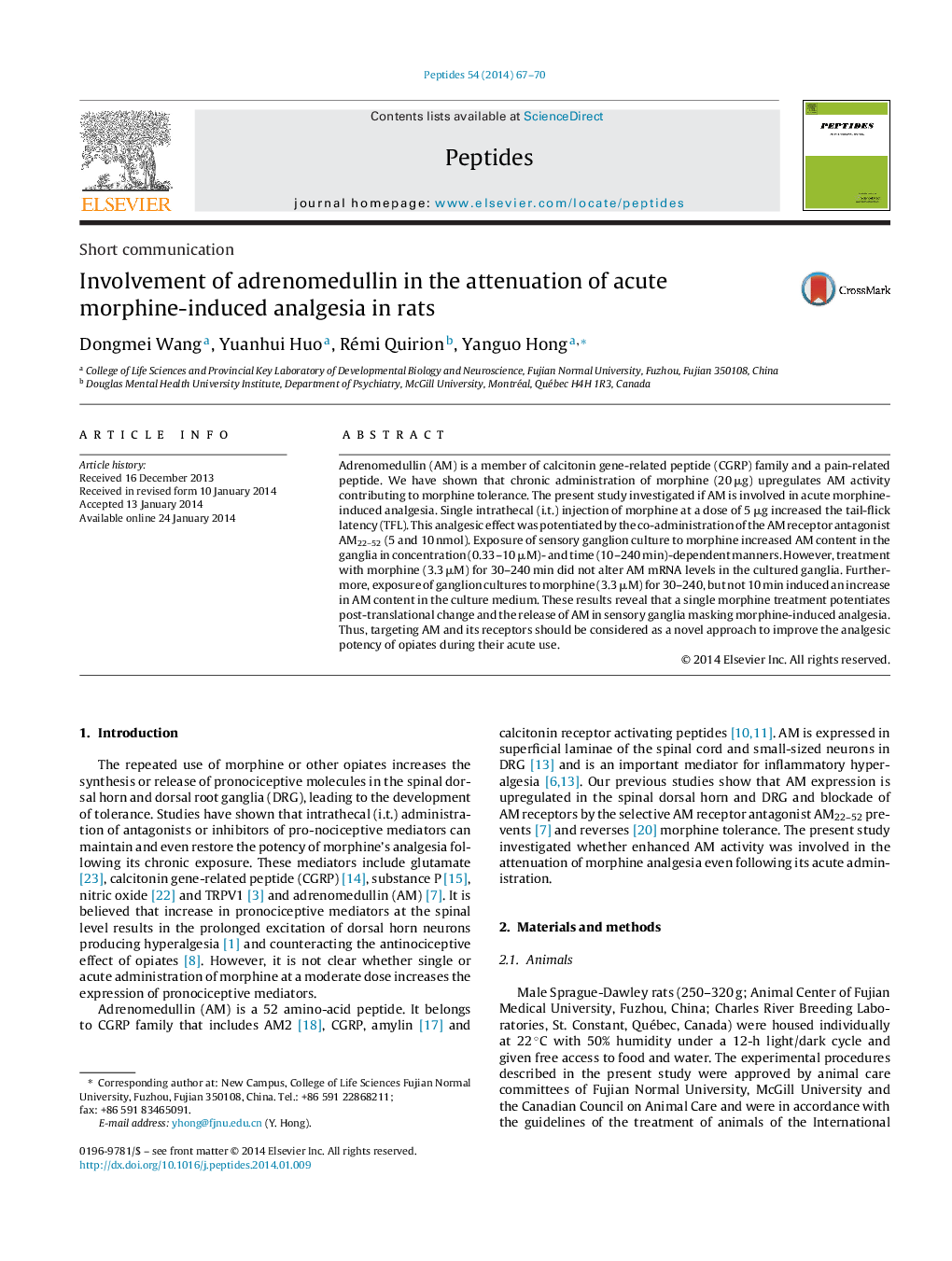| Article ID | Journal | Published Year | Pages | File Type |
|---|---|---|---|---|
| 2006130 | Peptides | 2014 | 4 Pages |
•Blockade of spinal adrenomedullin (AM) receptors did not change pain threshold.•Blockade of AM receptors potentiated morphine-induced analgesia.•Exposure of sensory ganglion cultures to morphine increased AM content, but not AM mRNA, in ganglia.•Treatment of ganglion cultures with morphine induced an increase in AM content in culture medium.•A single morphine treatment activates AM receptor signaling masking morphine analgesia.
Adrenomedullin (AM) is a member of calcitonin gene-related peptide (CGRP) family and a pain-related peptide. We have shown that chronic administration of morphine (20 μg) upregulates AM activity contributing to morphine tolerance. The present study investigated if AM is involved in acute morphine-induced analgesia. Single intrathecal (i.t.) injection of morphine at a dose of 5 μg increased the tail-flick latency (TFL). This analgesic effect was potentiated by the co-administration of the AM receptor antagonist AM22–52 (5 and 10 nmol). Exposure of sensory ganglion culture to morphine increased AM content in the ganglia in concentration (0.33–10 μM)- and time (10–240 min)-dependent manners. However, treatment with morphine (3.3 μM) for 30–240 min did not alter AM mRNA levels in the cultured ganglia. Furthermore, exposure of ganglion cultures to morphine (3.3 μM) for 30–240, but not 10 min induced an increase in AM content in the culture medium. These results reveal that a single morphine treatment potentiates post-translational change and the release of AM in sensory ganglia masking morphine-induced analgesia. Thus, targeting AM and its receptors should be considered as a novel approach to improve the analgesic potency of opiates during their acute use.
